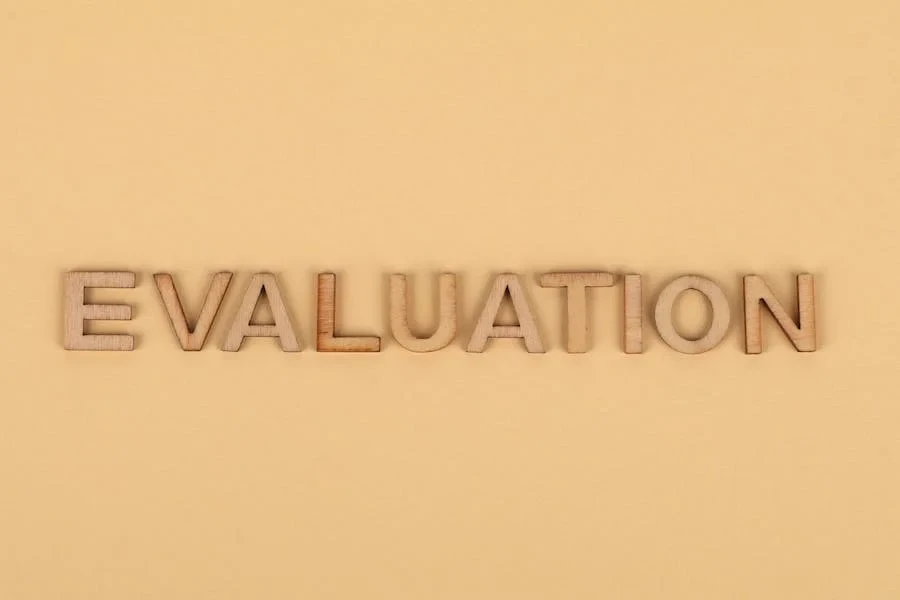Supply chain vendors form the linchpin of successful businesses. Failure in the vendor relationship management process could easily precipitate a business’s downfall, much like a misaligned card in a meticulously built house of cards.
A robust vendor relationship management (VRM) strategy brings forth many benefits. It allows for prudent cost management through negotiating favorable terms and enhances service levels, guaranteeing that vendors adhere to stipulated quality standards. Moreover, fostering long-term partnerships with vendors cultivates an environment of mutual understanding and support, positively impacting overall business performance.
But how can businesses ascertain the true value of their vendor partnerships? How can they evaluate if their vendor’s deliverables align with their expectations, and what steps should they take if they do not? To answer these questions, this blog post reveals a simplified 5-step guide that aims to elevate the vendor relationship management process.
Table of Contents
Identify and select potential vendors
Monitor and evaluate performance
Conduct risk assessments and develop a backup strategy
Establish centralized points of communication
Plan for an exit strategy
Transform vendors into partners for a win-win relationship
Identify and select potential vendors
Vendor relationship management is about selecting partners who cater to business needs and form part of the success story. The first step in this process is identifying and selecting potential vendors.
Vendors form an integral cogwheel within the supply chain. We can pin them into two broad categories:
- Suppliers: Businesses that provide raw materials, finished goods, or essential services to create or deliver a product.
- Logistics providers: Organizations that handle transportation, storage, and distribution, acting as the bridge that helps goods smoothly transition from suppliers to the end consumer.
A clear distinction between the two helps streamline communication and collaboration, the backbone of any long-term relationship. For instance, manufacturers (suppliers) can partner with companies to develop exciting new products, while logistics providers can ramp up their services by staying informed about forecasted demand.
So, how do companies find the perfect vendors that align with their business model? Let’s break it down into five simple steps:
- Identify business needs: Businesses must start by outlining the specific product or service they require from a vendor. This step forms the nucleus for all other expectations around quality, service, time, cost, etc. Also, it’s essential to consider the frequency and volume needed. Are businesses looking for a one-time service, or is it a necessary ingredient for a long-term partnership?
- Conduct due diligence: Harness the power of research. Analyze industry reports, pore over online reviews and ratings, and assess their financial stability. Get a holistic view of their capabilities based on past experiences supplying the sought-after product or service. A site visit can provide an up-close preview of their operations.
- Develop a request for proposal (RFP): Craft a detailed document outlining the specific requirements, anticipated service levels, selection criteria, and timelines. Funnel this RFP towards the vendors that made it through the preliminary screening. This step will help gather structured data from each vendor and enable a level playing field for comparisons.
- Evaluate proposals and assess fit: Once suppliers’ proposals start landing, it’s time for evaluation. Weigh them against criteria like costs, customer service, delivery capacity, and quality assurance mechanisms. An in-person interview can further let businesses gauge their problem-solving abilities.
- Check references: Contact prior business buyers or partners of the vendor. Extracting information about their experiences, satisfaction levels, and improvement areas can deliver valuable insights. A vendor’s past performance is often a reliable predictor of future service quality.
Monitor and evaluate performance

After the initial selection process, it’s important to take the time to monitor and evaluate vendor performance regularly. This step isn’t about playing a blame game or pointing fingers – it’s about holding vendors accountable to fulfill their promises consistently. After all, an unreliable vendor can lead to delays, unexpected expenses, and rub customers the wrong way.
It’s essential to create a centralized scorecard or a comprehensive evaluation checklist. Think of it as a report card for vendors, giving them actionable feedback and showing them where they excel or need improvement.
Here are some key performance indicators (KPIs) that businesses can use to check how well their vendors are doing:
- Delivery timelines: Does the vendor deliver on time, every time? Late deliveries can disrupt business schedules and disrupt valuable customer commitments.
- Order accuracy: Nobody likes mistakes, especially when they can derail production and sales plans. This KPI tests how often the supplier delivers the ordered quantity and specifications.
- Quality compliance: How well does the vendor adhere to the agreed product or service quality? Keep track of how frequently goods are returned due to quality issues.
- Pricing stability: As the saying goes, “Change is the only constant.” But one place where companies want to avoid too many variables is in the price of their raw materials. Examine the supplier’s history of price changes, which might signal issues affecting the pricing strategy.
Remember – this step isn’t just about assessing the negatives; it should also spotlight the positives! When vendors know their services, exceptional actions, and innovations will be recognized and appreciated, they will likely go the extra mile. This sense of preferential treatment fosters strong relationships and transforms them into trusted partners.
Here are a few practical ideas to reward vendors for their hard work:
- Contract extensions: Offering longer-term contracts gives vendors a sense of stability and encourages them to maintain their high performance.
- Increased orders: If a vendor consistently excels, why not ask for more excellent service? Increasing their volume of orders is a direct expression of appreciation and a testament to their top-notch services.
- Public recognition: Everyone loves a bit of limelight. Consider an annual vendor award or certification ceremony to celebrate the hands behind the supply chain — a golden ticket for vendors to show off and realign efforts to clinch more wins!
Conduct risk assessments and develop a backup strategy
With a pen in one hand and scorecards in the other, it’s time to look hard at vendor performance reports. These scorecards aren’t mere paperweights but tools for assessing potential risks linked to each vendor. This critical evaluation will help categorize vendors into three risk-based categories:
- High-risk vendors: These vendors may appear like daunting storm clouds on the business horizon. They’ve showcased inconsistencies, perhaps due to missed deadlines, quality issues, or another form of performance blip.
- Medium-risk vendors: These vendors are the pastel shades in our color palette, a mix of lighter and darker hues. They usually meet expectations, but there might be an infrequent smudge or missed stroke.
- Low-risk vendors: Picture the perfect cup of coffee. Just like our favorite morning beverage, these low-risk vendors are consistently good. They’re the top performers, consistently delivering on promises while maintaining a stellar reputation for quality.
Now that businesses have labeled the risks of each category of vendors, it’s time to draft up a strategic defense. Picture this as a personal game plan, a detailed playbook of what to do should any risk actualize. Here is an example of a clear visual table that represents an effective plan for each risk category:
| Risk category | Potential risk | Mitigation strategy |
| High-risk vendors | Erratic performance leading to supply disruption | Set clear terms in the contracts outlining penalties for sub-par performance; this will guard businesses and incentivize better performance from the vendor. Also, consider investing in supply chain disruption insurance. |
| Medium-risk vendors | Intermittent supply issues and occasional misses in quality standards | Create a backup plan entailing partnerships with alternative suppliers offering similar goods or services; it reduces dependency on a single vendor, ensures continuous supply, and helps maintain quality standards. |
| Low-risk vendors | Minor performance hiccups and mild variations in the supply schedule | Keep open lines of communication for immediate issue resolution. Regularly revisit and renegotiate contract terms to ensure both parties continue to benefit from the relationship. |
Establish centralized points of communication
Effective communication is the lifeblood of any strong relationship. This truth is no different when it comes to vendor relationship management strategies. A crucial aspect of VRM is maintaining a streamlined and efficient mode of communication.
To this end, businesses should consider establishing a central point of communication. Implementing vendor relationship management software like Gatekeeper can significantly aid businesses in establishing a “single source of truth.” This focal point becomes the mainstay of all vital communications, related data exchange, and activities with vendors.
When integrating such software, businesses can potentially realize several benefits:
- Streamline communication: A centralized platform provides a single location for all interactions. Information can be shared quickly and accurately among procurement teams, reducing the likelihood of miscommunication or missing crucial messages. This feature is particularly beneficial when notifying vendors about foreseeable changes or informing them of emerging issues. It ensures that all vendors receive the information simultaneously for consistent and accurate communication.
- Establish a two-way feedback system: Vendor portal software often has built-in mechanisms for facilitating feedback and dialogue. This two-way feedback system allows vendors to share their insights, suggestions, or concerns. This encourages vendor participation and improves the communication process and overall vendor relationship.
- Promote visibility and transparency: A centralized vendor portal grants businesses and vendors complete visibility into transactions, deliveries, inventories, and other critical operations. This visibility promotes transparency and ensures all parties are on the same page. It empowers vendors with the information they need to fulfill their commitments and continuously improve their services.
- Automate workflows and notifications: Vendor portal software often features automated workflows and notifications. These systems are crucial for managing various tasks, reminding teams of contract renewals, or updating parties on agreement changes. Automation reduces the risk of human error and increases operational efficiency.
Plan for an exit strategy
Even the best supplier relationships can take an unexpected turn. Nobody enters a partnership anticipating its end, but smart businesses know it’s essential to prepare for every possibility. A carefully planned exit strategy can help businesses smoothly break ties with a vendor, whereas a lack of one might lead to a chaotic situation.
While saying goodbye might seem daunting, having a well-outlined exit strategy can give businesses peace of mind, knowing they are prepared to handle the ‘what ifs’ when they arise. So, what should an exit strategy look like? Let’s untangle this knot together:
Clear termination clauses in contracts
The contract should plainly state under what conditions it can be canceled. This could be due to the vendor not following the contract terms or not providing good service. Including a detailed termination clause will minimize uncertainties and pave the way for an amicable separation if things don’t work out.
Handling proprietary information
Once a business relationship ends, it’s crucial to ascertain how proprietary or confidential information will be handled. Companies need a well-defined process for data return or deletion or usage restrictions. This ensures that business data and intellectual property remains secure post-separation.
Backup vendor selection
Identify alternate supply chain vendors ahead of time. Having a ‘Plan B’ ready prepares organizations for unforeseen circumstances, such as the need to promptly end an existing vendor relationship. This move ensures that businesses maintain their momentum, regardless of supplier relationships.
Inventory management
Set clear-cut strategies for managing inventory in transit or the vendor’s possession upon termination. Such a move will help avoid unnecessary losses or confusion during the exit phase. And remember, the end of one vendor relationship can be the beginning of another.
Transform vendors into partners for a win-win relationship
In conclusion, effective vendor relationship management transforms the conventional perception of vendors from merely being suppliers or logistics providers. It elevates them to the role of strategic partners who collaborate right from the early stages of product development to fine-tune the customer experience.
By deploying the power of refined communication, ongoing performance reviews and feedback, recognizing vendor contributions, and aligning with customer profiles, businesses can transform conventional vendor relationships into mutually beneficial partnerships, fueling sustainable growth and ensuring e-commerce success.
Still hesitating? Here are seven tips for developing a strategic supplier management strategy!

Looking for a logistics solution with competitive pricing, full visibility, and readily accessible customer support? Check out the Alibaba.com Logistics Marketplace today.




